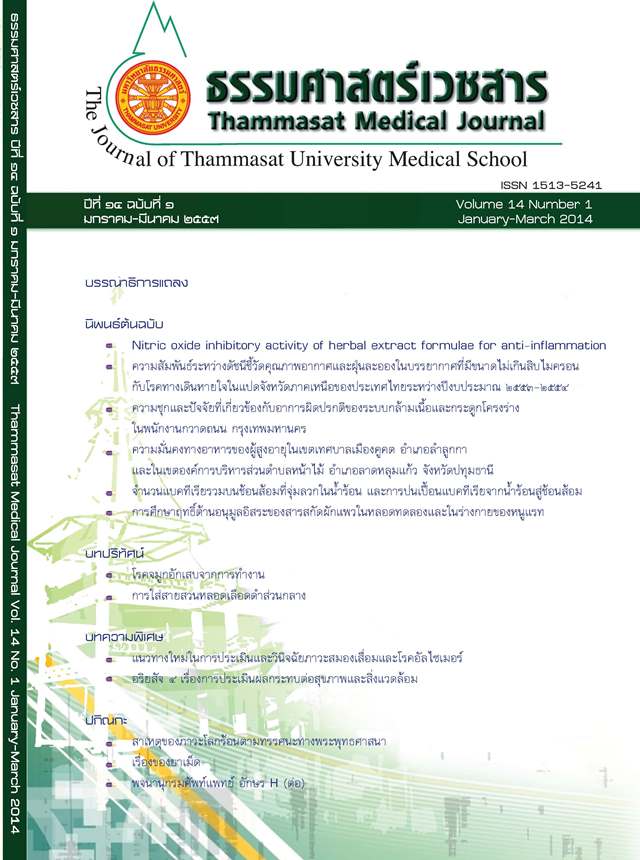The relationship between air quality index, particulate matter (PM10) and respiratory diseases in the eight upper Northern provinces of Thailand, an analysis of data in the years 2010 and 2011
Keywords:
Air quality index (AQI), Particulate matter smaller than 10 microns (PM10), Asthma, Lower respiratory diseasesAbstract
Introduction: The aim of this study was to explore whether there was relationship between air quality index (AQI),particulate matter smaller than 10 microns (PM10) and respiratory diseases in Thailand.
Method: An analysis was made using data from respiratory disease sent to the National Health Security Office(NHSO) in the fiscal years 2010 and 2011. Patient admission counts of each day were combined withdaily air quality data obtained from website of the Department of Pollution Control. The joined data wasanalyzed using linear regression model.
Result: A linear relationship was found between numbers of admissions from all respiratory diseases and AQI/PM10 (regression coefficient 0.2386 and 0.1283), between numbers of admissions from asthma/chroniclower respiratory diseases and AQI/PM10 (regression coefficient 0.3766 and 0.2168). There was noadvantage using air quality data to explain the admissions in the next one to seven days, because theregression coefficient in non-shifted data was better than shifted data.
Discussion and Conclusion: PM10 and AQI were found to be a significant determinant of respiratory diseases admissions especially asthma and chronic lower respiratory diseases.
Key words: Air quality index (AQI), Particulate matter smaller than 10 microns (PM10), Asthma, Lower respiratory diseases


